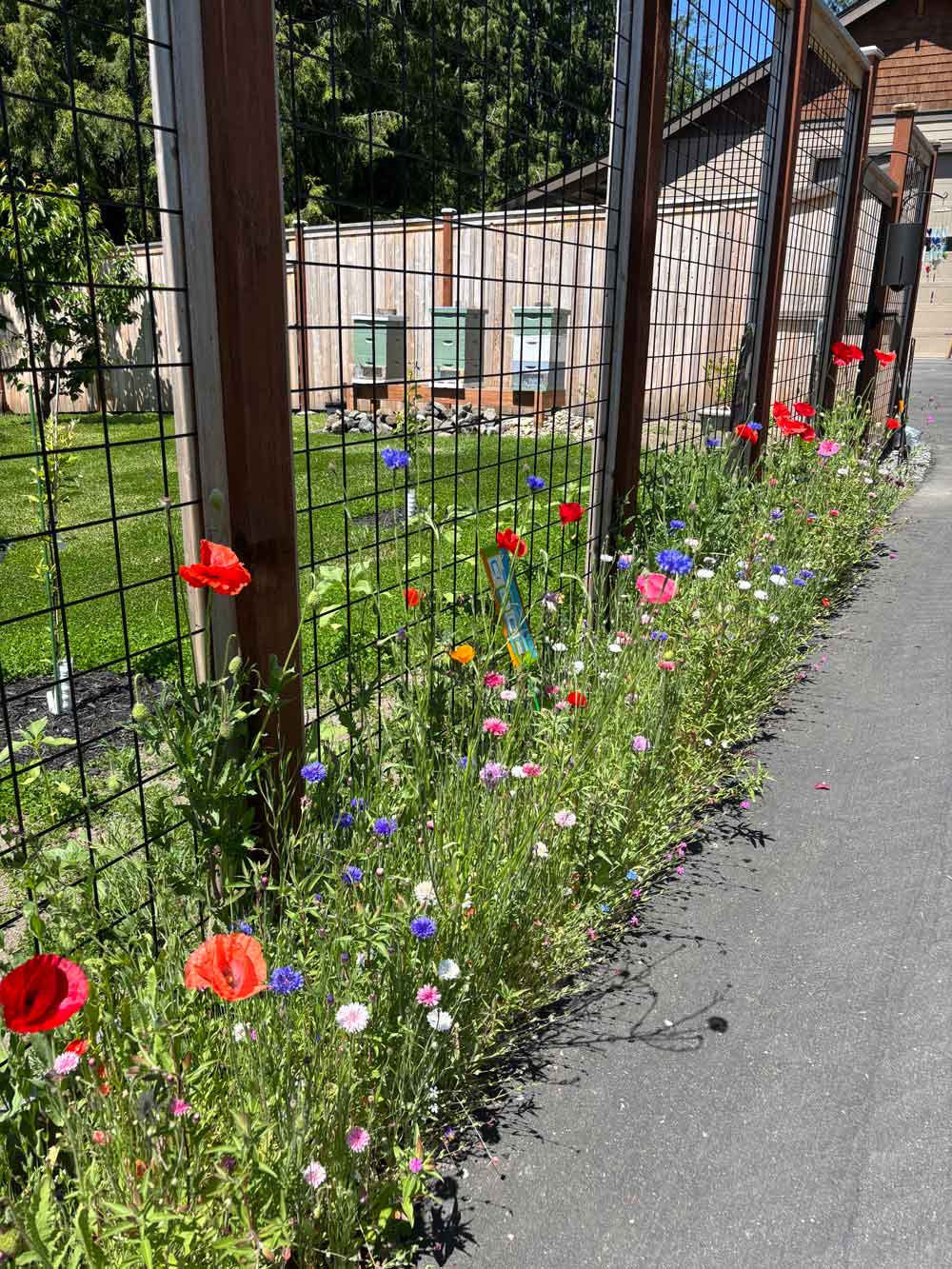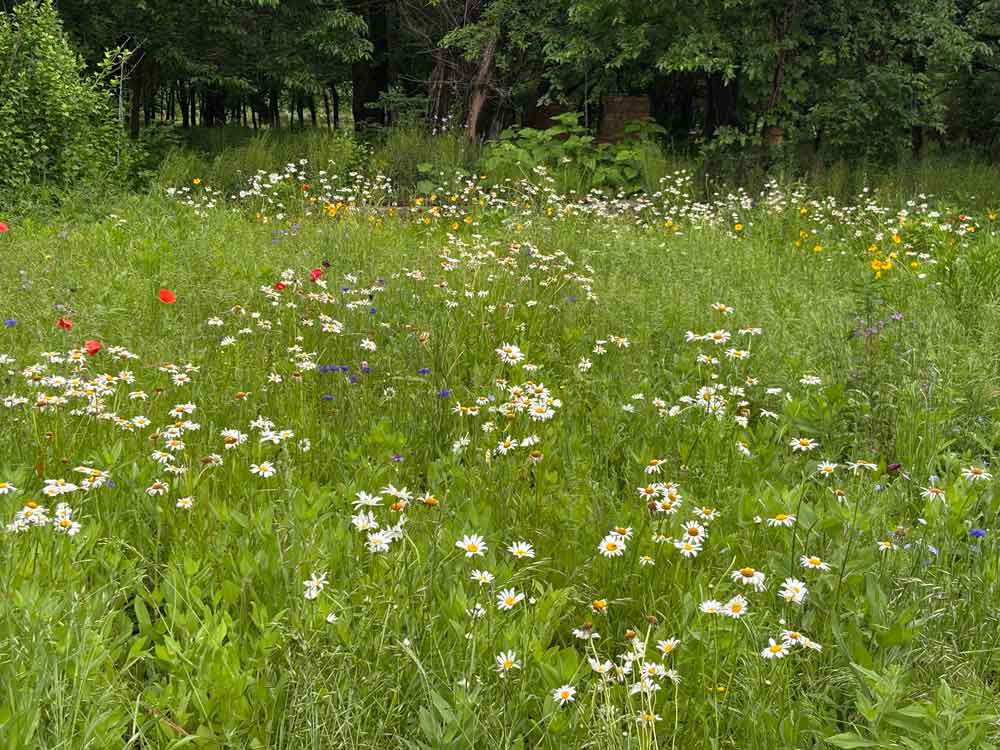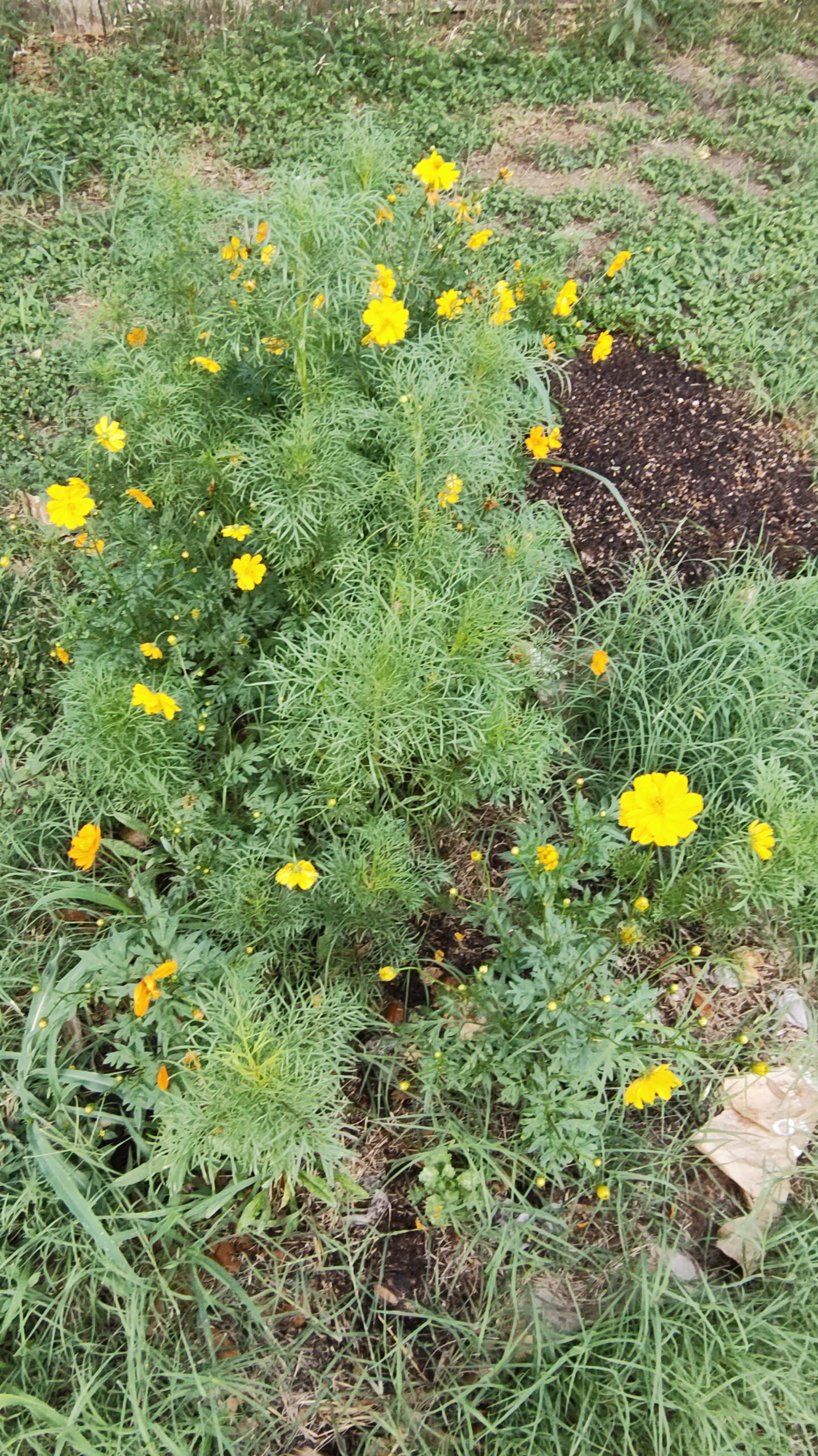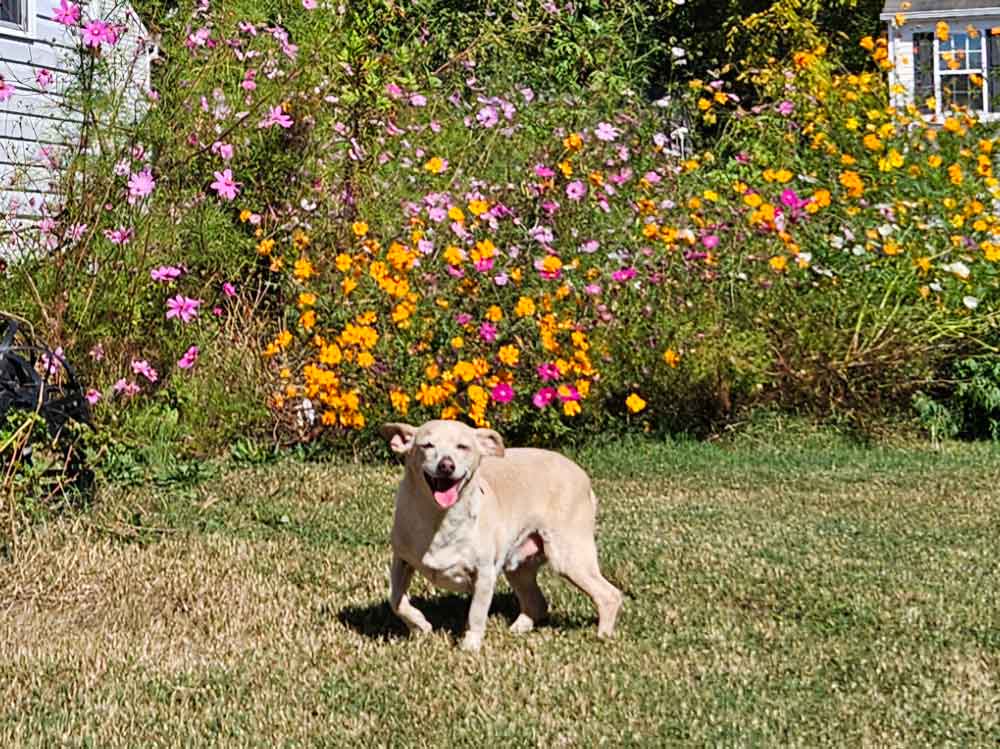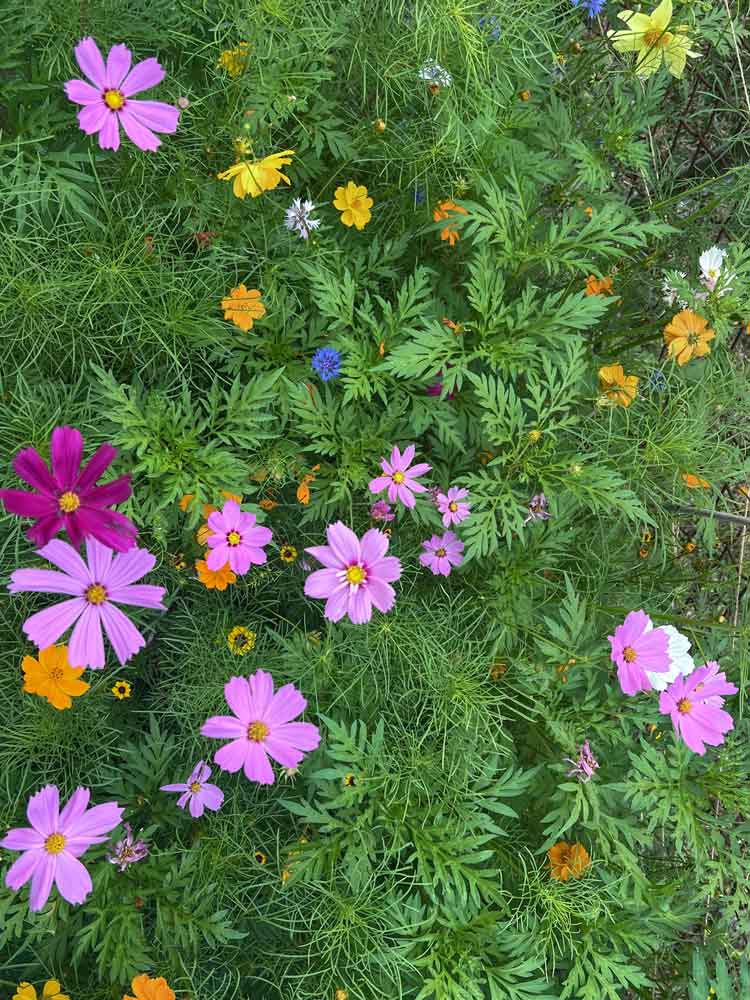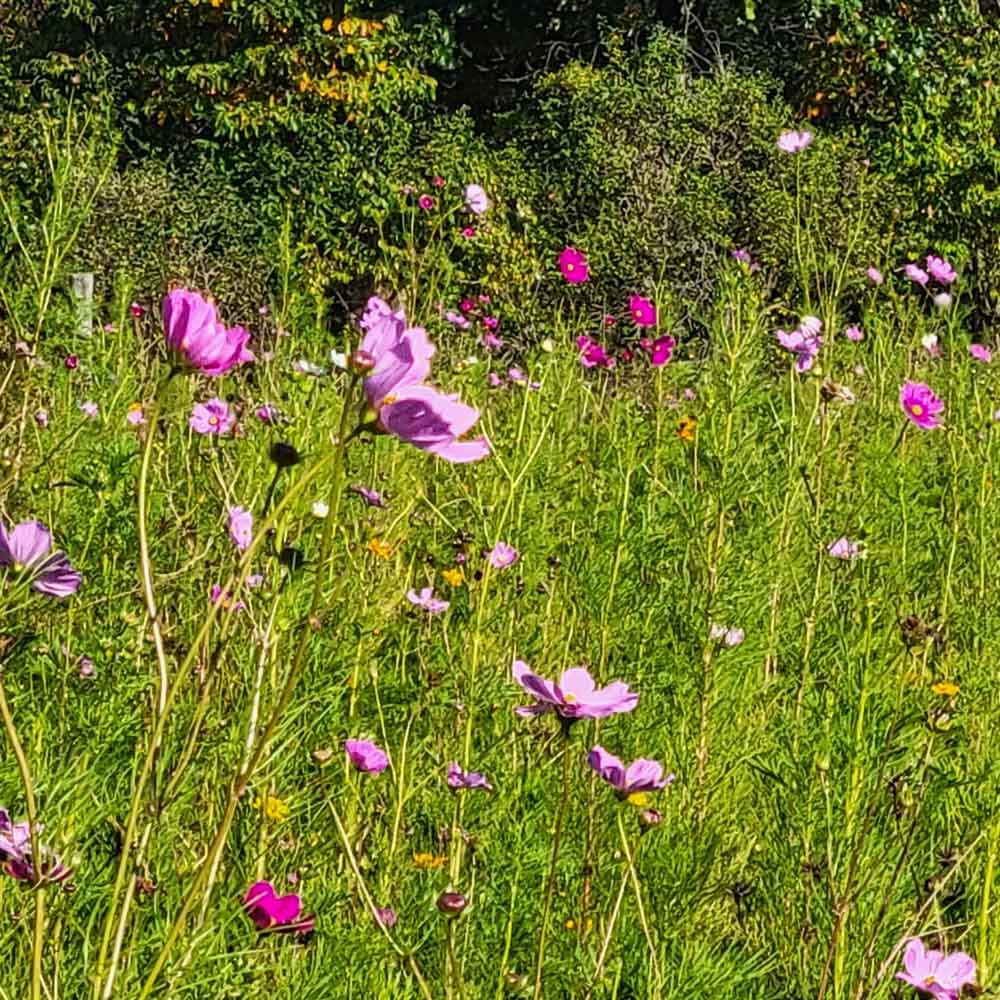When to Plant
Fall is an ideal time to plant perennial wildflowers. To plant wildflowers in the fall, sow seeds after the first two or three killing frosts, when soil temperatures are too cold for germination (typically below 50°F). This timing prevents early sprouting and allows seeds to lie dormant through winter. This method is referred to as ‘dormant planting’. Come spring, they’ll naturally germinate with warming temperatures and seasonal moisture. Within this first growing season, plants usually establish their root structure and some green growth. You may see some flowers during this first year, but the real show begins in the second growing season, and every year thereafter.
In warmer climates, plant in the fall or winter, typically two to three months before any frost dates so that seeds can germinate during cooler temperatures. Expect most of the progress to happen below ground: root structures will be created, with some green growth. You may see a few blooms during this first season as well, but most perennials need until their second growing season to truly shine.
Spring is a popular time to plant as well, offering natural rainfall to support germination. All zones can plant in the spring as long as the wildflower seeds are sown after the last frost, once soil temperatures reach 55°F or warmer. This timing varies by region but typically falls between mid-March and late May.
Where to Plant
Though many wildflowers do tolerate some filtered shade, and a few actually thrive in it, the vast majority are definitely sun-lovers. Wildflowers will generally sprout in all but the most difficult conditions. This means that pampering your site with fertilizer or rich sod is not usually necessary. An easy rule of thumb is if other vegetation is thriving there, even if its just weeds, then wildflowers should grow there too.
How to Plant
Wildflower seeds require light to germinate, so be careful not to cover them when planting. Learn more about germination light requirements here.
Clear the area of rocks, grass, and weeds so that you seeds will be sown on bare dirt. If you need to till, loosen the soil to a shallow depth as best you can before planting your seeds. Tilling deeply will just bring up unwanted weed seed. Don’t panic though when some weeds sprout along with the flowers, this will happen when the soil is worked.
We recommend mixing your seeds with sand – 5 parts sand to 1 part seeds. This allows for a more even distribution and also provides a convenient way to mark which portions of the site have been seeded and which have not. For a smaller area, you can hand-broadcast the seeds. For larger areas, we recommend a seed spreader to create a better cast of the seeds.
After the seeds have been sown, compress the seeds into the soil for good seed-to-soil contact; lightly covering them with no more than 1/4″ soil will help to protect them from birds and wind.
How to Care for Perennial Wildflowers
Although Wildflowers are pretty easy to take care of, there are some steps to keep it looking beautiful. For the first four to six weeks, make sure the area is regularly watered to aid in your seeds’ germination and establishment. After this period, your seedlings should be well established in the area and your first annuals should be up to 8 to 10 inches tall. Regularly weed to ensure your wildflowers are getting the nutrients they need. Water your plants during dry spells. Deadhead blooms that are spend to encourage new growth.

